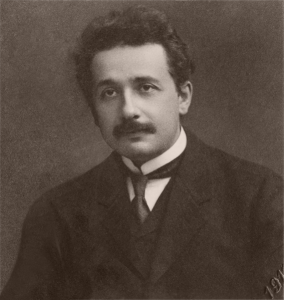
Albert Einstein (1879-1955) has unquestionably been an iconic figure of the twentieth century.
Father of quantum mechanics, with the formulation of the theory of relativity he redefined the concept of gravity, giving impetus to new discoveries not only in the field of physics but also in the cosmological and astrophysical ones.
The Nobel Prize in Physics – which he won in 1921 for the theory of the photoelectric effect – further increased his fame, due in large part to his extraordinary intellectual qualities but also to his whimsical and unconventional personality.
Einstein a Pavia
The Einstein family moved to Pavia to start a business supplying electrical materials to local electrification endeavors, and Albert joined them in the spring of 1895.
Until 1896 – when the family business unfortunately went bankrupt – Einstein happily returned to Pavia during breaks from his University studies. Here, the family had integrated well with the local middle class and was staying, by a curious case, in the same building where Ugo Foscolo had lived.
The physicist forged close friendships in those times; among others, he bonded with the Marangoni family, who lived in Casteggio. His friend Ernestina Marangoni kept their correspondence throughout her life, which comprises letters written in Italian, English and German.
The Pavia University History Museum displays three letters written by Einstein between 1946 and 1952 in the Golgi room.
